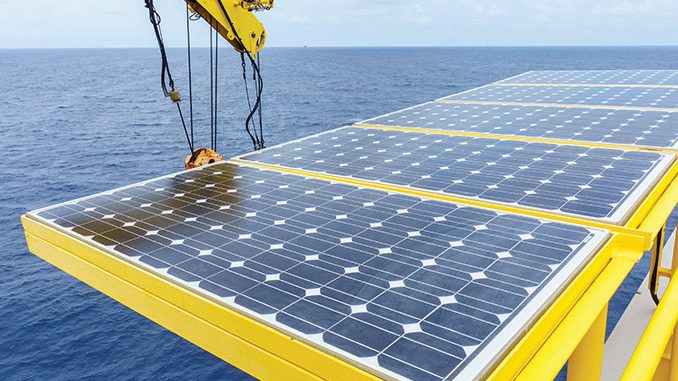
By Ashay Abbhi
Commercial and industrial establishments are some of the biggest power guzzlers in the Indian electricity market. Transportation is a large part of the commercial power demand market, with ports playing a major role in the segment. In August 2016, the government decided to implement utility-scale solar power projects across major ports in the country as part of the Green Ports initiative launched by the Ministry of Shipping. The Solar Energy Corporation of India (SECI), which was appointed as the project management consultant for these projects, signed an MoU with the Indian Ports Association to take the initiative forward.
The objective of this initiative is to reduce carbon emissions at ports, bring down the cost of power purchased from the grid by utilising solar power and meet the renewable purchase obligations as required by the state governments. Once completed, these solar power projects will help in reducing carbon emissions by about 136,500 million tonnes annually, resulting in cost savings of Rs 750 million per annum. The initiative targets the setting up of renewable energy projects totalling 135 MW in capacity at eight ports. Of this, the Jawaharlal Nehru Port Trust (JNPT) has the largest share of 25 MW, while Paradip, Kamarajar and Kandla ports have a proposed capacity of 20 MW each. In addition to Visakhapatnam and V.O. Chidambaranar (VOC), with 15 MW of capacity each, Kolkata and New Mangalore are proposed to house 10 MW of solar power capacity each.
Current status
In January 2019, Visakhapatnam port announced that it has been running on 100 per cent solar energy since it commissioned a 10 MW captive solar power project in May 2016. The project was developed by the Visakhapatnam Port Trust with engineering, procurement and construction (EPC) services being provided by Jakson Engineers. Almost half of the generated power is consumed by the port while the rest is sold to private customers through third-party contracts. In August 2017, a 4 MW solar power plant was commissioned at New Mangalore Port by Bosch Energy and Building Solutions. In March 2017, SECI invited bids for installing a 2 MW grid-connected solar power plant at the Haldia Dock Complex for the Kolkata Port Trust.
In August 2016, SECI floated an EPC tender for the installation of a 10 MW solar power plant at Paradip port on behalf of the Paradip Port Trust. The tender was won by Surana Solar and the project was built at a cost of Rs 606 million.
In August 2015, a 100 kW grid-connected solar power plant was commissioned by the VOC Port Trust. This was followed by another 400 kW being commissioned in January 2017. The 500 kW project was developed at a cost of Rs 47.8 million. In August 2019, the VOC Port Trust announced plans to develop solar power projects with a cumulative capacity of 10 MW. This includes a 5 MW solar project being built at a cost of around Rs 250 million. The detailed project report is under preparation.
Besides these, JNPT has installed around 820 kW of solar power capacity at a cost of Rs 45 million. In September 2016, the Mormugao Port Trust, Goa, commissioned a 240 kW rooftop solar power plant under capex mode at a cost of Rs 14.5 million. Chennai port currently has around 100 kW of solar power capacity installation. The project was set up by Alectrona Energy at around Rs 9.2 million. Meanwhile, the Cochin Port Trust has installed a 150 kW solar power plant at a cost of Rs 10 million.
Challenges and outlook
Solar power generation requires a large amount of unrestricted, shade-free area to deliver optimum performance. However, this may not always be possible in commercial spaces such as ports. Space constraints may lead to lower than optimum capacity being installed at the site. Therefore, the option of using rooftop spaces for solar generation is being increasingly explored by ports. Under the solarisation of ports initiative, the funds required for installing solar power plants will be managed by the respective ports. This adds to the financial burden on port trusts, which explains the delay in the commencement of projects at various ports.
The solarisation of ports is a step in the right direction towards reducing the carbon footprint and bringing in power self-sufficiency in the transportation sector. Over the next few years, it is expected that the cumulative capacity target of 135 MW across major ports will be met; this will help in reducing the power bills and overall operational expenses of Indian ports.



